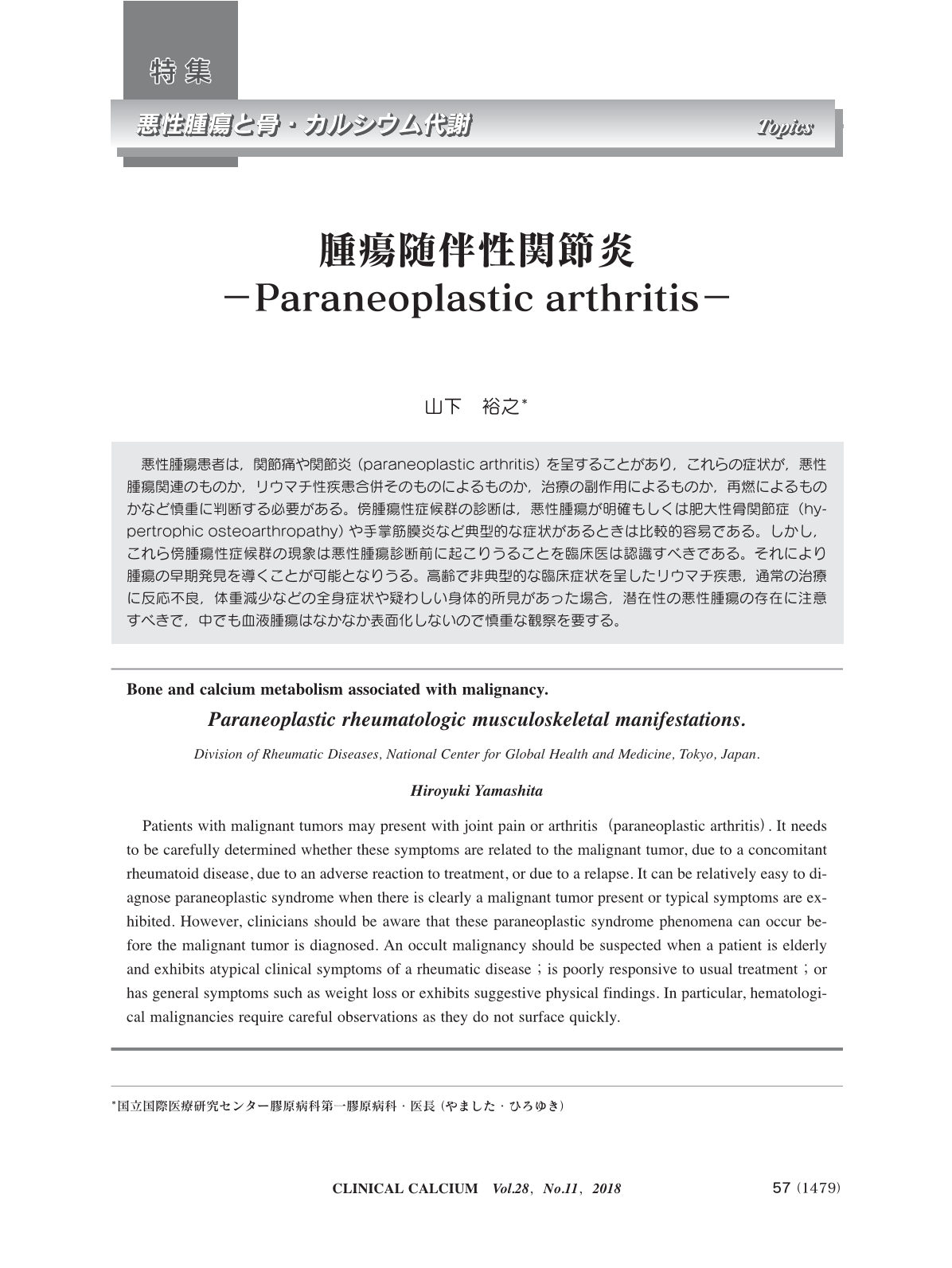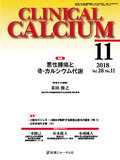Japanese
English
- 有料閲覧
- Abstract 文献概要
- 1ページ目 Look Inside
- 参考文献 Reference
悪性腫瘍患者は,関節痛や関節炎(paraneoplastic arthritis)を呈することがあり,これらの症状が,悪性腫瘍関連のものか,リウマチ性疾患合併そのものによるものか,治療の副作用によるものか,再燃によるものかなど慎重に判断する必要がある。傍腫瘍性症候群の診断は,悪性腫瘍が明確もしくは肥大性骨関節症(hypertrophic osteoarthropathy)や手掌筋膜炎など典型的な症状があるときは比較的容易である。しかし,これら傍腫瘍性症候群の現象は悪性腫瘍診断前に起こりうることを臨床医は認識すべきである。それにより腫瘍の早期発見を導くことが可能となりうる。高齢で非典型的な臨床症状を呈したリウマチ疾患,通常の治療に反応不良,体重減少などの全身症状や疑わしい身体的所見があった場合,潜在性の悪性腫瘍の存在に注意すべきで,中でも血液腫瘍はなかなか表面化しないので慎重な観察を要する。
Patients with malignant tumors may present with joint pain or arthritis(paraneoplastic arthritis). It needs to be carefully determined whether these symptoms are related to the malignant tumor, due to a concomitant rheumatoid disease, due to an adverse reaction to treatment, or due to a relapse. It can be relatively easy to diagnose paraneoplastic syndrome when there is clearly a malignant tumor present or typical symptoms are exhibited. However, clinicians should be aware that these paraneoplastic syndrome phenomena can occur before the malignant tumor is diagnosed. An occult malignancy should be suspected when a patient is elderly and exhibits atypical clinical symptoms of a rheumatic disease;is poorly responsive to usual treatment;or has general symptoms such as weight loss or exhibits suggestive physical findings. In particular, hematological malignancies require careful observations as they do not surface quickly.



